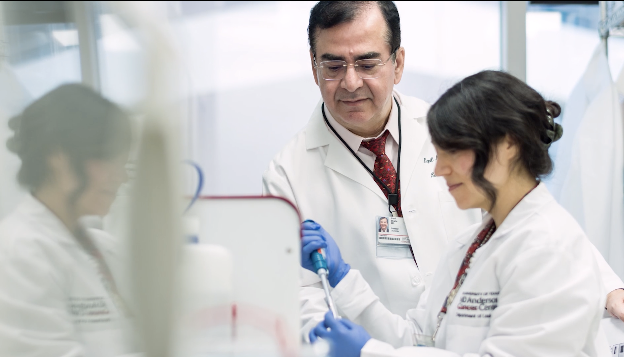
Did you know May is National Cancer Research Month? Cancer research is an important part of our mission here at Leukemia Texas. Leukemia Texas awards grants for research to enhance the understanding of leukemia and its cause, to develop new and improved methods of treatment, and to ultimately find a cure. Thankfully, incredible progress has been made to improve the treatment of leukemia and Leukemia Texas has taken an active role in contributing to these advances!
Leukemia is a blood cancer caused by a rise in the number of white blood cells in your body. Those white blood cells crowd out the red blood cells and platelets that your body needs to be healthy. The extra white blood cells don’t work right.
In this blog post, we explain what leukemia is, how it affects the body, warning signs and symptoms of the disease, how it’s diagnosed, treatment options, and medical research.
Blood has three types of cells: white blood cells that fight infection, red blood cells that carry oxygen, and platelets that help blood clot. Every day, your bone marrow makes billions of new blood cells, and most of them are red cells. When you have leukemia, your body makes more white cells than it needs.
These leukemia cells can’t fight infection the way normal white blood cells do. And because there are so many of them, they start to affect the way your organs work. Over time, you may not have enough red blood cells to supply oxygen, enough platelets to clot your blood, or enough normal white blood cells to fight infection.
Types of leukemia:
- Acute lymphocytic leukemia (ALL). This is the most common form of childhood leukemia. It can spread to your lymph nodes and central nervous system.
- Acute myelogenous leukemia (AML). This is the second most common form of childhood leukemia and one of the most common forms for adults.
- Chronic lymphocytic leukemia (CLL). This is the other most common form of adult leukemia. Some kinds of CLL will be stable for years and won’t need treatment. But with others, your body can’t create normal blood cells, and you’ll need treatment.
- Chronic myelogenous leukemia (CML). With this form, you might not have noticeable symptoms. You might not be diagnosed with it until you have a routine blood test. People 65 and older have a higher risk of this type.
Symptoms:
Different types of leukemia can cause different problems. You might not notice any signs in the early stages of some forms. When you do have symptoms, they may include:
- Weakness or fatigue
- Bruising or bleeding easily
- Fever or chills
- Infections that are severe or keep coming back
- Pain in your bones or joints
- Headaches
- Vomiting
- Seizures
- Weight loss
- Night sweats
- Shortness of breath
- Swollen lymph nodes or organs like your spleen
Diagnosis:
Your doctor will need to check for signs of leukemia in your blood or bone marrow. They might do tests including a blood test, bone marrow biopsy, spinal tap, or other imaging tests.
Treatment:
The treatment you get depends on the type of leukemia you have, how far it’s spread, and how healthy you are. The main options: Chemotherapy, Radiation, Biologic Therapy, Targeted Therapy, Stem and Bone Marrow Transplant, and Surgery.
At Leukemia Texas, we are proud of our 53-year history of contributing to the improvement of leukemia treatments through better research. Over the past few years, LTX has given over $630,000 to promising research teams in Texas and over $1,125,000 in research grants to Young Investigators in Texas. We hope to continue our Research Grant Program for many years to come!
If you would like to support our Research Grant Program, please donate to Leukemia Texas today!